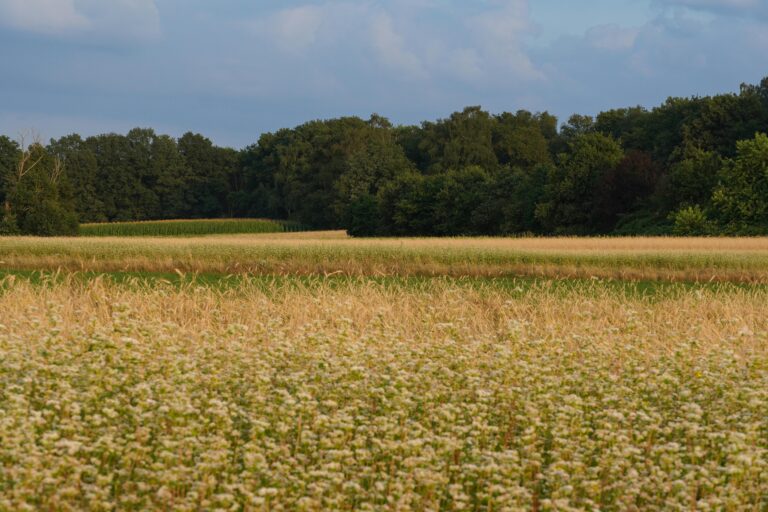With hunting season upon us, the “meat” of this article is understanding buying value in a western ranch.
Simply put, the most important issue in buying a ranch is understanding what your goals are as a buyer, as a family and as an investor (what you hold “deer”). We have a saying in the ranch business: “It’s easy to get in and can be hard to get out.” That statement really covers two key points: one is to understand what you are getting into, and the other is understanding what you and/or your family will eventually be getting out of. Once many make a move, buying their first ranch, they find that buying ranches is like eating Lay’s® potato chips—it’s really hard to have just one.
Establishing your goals
When you find yourself at the point of making this type of investment, take the time to evaluate what you, your family, your tax accountant and your financial adviser hold dear.
Evaluate what your top priorities are: Is it an escape sanctuary property? Is it based on recreation, fishing, hunting, hiking? Is it based on access? Are public lands access (or what we call a BIG back yard) an important factor? Do you want closer access to amenities? How are you predominately traveling to and from your ranch? Is a travel radius in your criteria? If so, what is your comfortable travel radius? What direction does traffic flow best between your hometown and your location—East, West, North or South? If by plane, private or public? If private, what is the closest FBO, and what services are offered? If by public, what airport will you predominately use, and how many airlines provide a way you can get to and from your piece of paradise?
Buying value in a ranch
This is a very broad point. The key factors we always look to are:
- Water Rights: Are they senior, and how real are they? What happens in dry years?
- Production: Is the ranch a producer? What does it produce—cattle, hemp (this is really gaining popularity in Colorado), hay?
- Recreation: Is the ranch backed into public lands? What regional attributes contribute to the lifestyle of owning this ranch?
- Hunting Units: Does the ranch lie in a limited hunting unit? Does the ranch qualify for private landowner tags? What species are those tags available for? What are the male-to-female ratios? How is the overall heard health—is CWD, Chronic Wasting Disease, predominate in this game unit?
- Live Water: For us, this one is a “biggie.” We have a saying: “It’s cheaper to build good river than to buy good river.” A whole other article could be written on building great river. But the basic points are: What is the natural terrain of the ranch, i.e. how much does the stream drop from when it enters the ranch to when it leaves the ranch? What are the historic channels of the stream? Many western ranches have seen streams pushed against hillsides or straightened to allow for more hay production and better grazing. How many pastures or water rights on pastures are coming on and off the ranches located upstream of your dream ranch? Thus, how warm does your trophy trout stream get in the heat of summer and the peak of irrigation?
- Regional Attributes: Where is the ranch located? What are the historic growth trends of the area? Why are people attracted to that area? What type of future values can you base on past value growth? How far away are medical facilities? What type of services do you hold as critical? There are many, many questions in this category. What is your list?
Once you know what you hold as your top values, you can start your search based on what region has the terrain, temperatures and water you desire. You can search by area attributes—what communities in those regions have the must-have attributes on your list. As your focus narrows, you can evaluate values—this will define acreage parameters. As you narrow more, you can address needs, i.e. great hunting, or live water or existing improvements. How do you eat an elephant? One bite at a time. A great way of evaluating your ranch goals is to start at 30,000 feet and work your way down in scope, goal by goal.
Value buying
One of the big trends that we are seeing more and more of in the ranch industry are what many call “shared amenity ranches.” These ranches are typically located in what would be referred to as a Class A area; for example, a major ski basin or communities such as Steamboat, Jackson Hole or one of the best up and coming communities in the west—Crested Butte. In most, if not all, of these areas, there are very few larger properties left. Much of these high alpine ranch communities are heavily publicly owned with some counties reaching as high as 97 percent public lands. Those kind of “big back yard” play grounds tend to leave little private lands. Thus, the price tag in these areas can easily reach $25,000 to $40,000 per acre for live waterfront ranches. The upside is that these areas offer a great deal of activity and literally a limitless opportunity for outdoor adventure. In these types of valleys, you can go from cabin to concierge services in a matter of minutes.
M4 Ranch Group has prided itself on knowing the available western ranch opportunities. Day in and day out we are either on a ranch, learning about a ranch or selling a ranch. In those miles upon miles of travel, one of the best shared amenity ranches we have ever worked on is the Eagle Ridge Ranch, located in the Crested Butte Valley on the Ohio River. In my opinion, this ranch is the epitome of how a high-quality shared ranch is done. Offering over 4,900 acres of alpine ranch, shared by only 15 families, with a no-B.S. HOA. The ranch climbs from the cottonwood-covered river bottom with three miles of live trout stream to the high alpine wilderness cabins, backed into millions of public acres. Nestled under jagged peaks with a skyline of mountains, the working Eagle Ridge Ranch cattle ranch provides the lowered tax base with none of the headaches. Strong quality ranch management programs address everything from fences to grazing rotations and irrigation to production, all while providing the safety of on-hand management and local connections as well as relationships to events. If your goal is to enjoy a ranch, this is the type of ranch you may want to focus your attention on; a ranch that is run well with additional benefits can be the most headache-free, lifestyle-rich way to enjoy a western ranch. If your desire is to ride and rope with the best of them, cattle round ups and brandings are annually available; if your desire is to find your niche by a mountain stream or in a mountain meadow for summer wildflowers—or in the same meadows for the fall elk rut, you may find your favorite attribute is walking, snow showing or skiing the ranch trails. From Jeeps to OHVs and horseback to mountain trails, Eagle Ridge Ranch offers the “get up and get out” ranch that so many desire in today’s busy world.
Keep in mind, no matter what fits your goals, from the huge expanse of the west’s top bison ranches to the smaller intimate acreage backed into public lands, ranches are rarely buy-and-flip types of properties. Real value in a ranch is time. We typically find those who do the best on ranch values are those who buy a ranch as an end user; those who are vested in building a family legacy; those who are searching for a property that allows for long-term impacts on family and friends; those searching for a lifestyle property. These buyers typically have the win-win scenario—time to enjoy, time to build, time to appreciate and time that allows the markets to further reduce opportunity and improve value.



